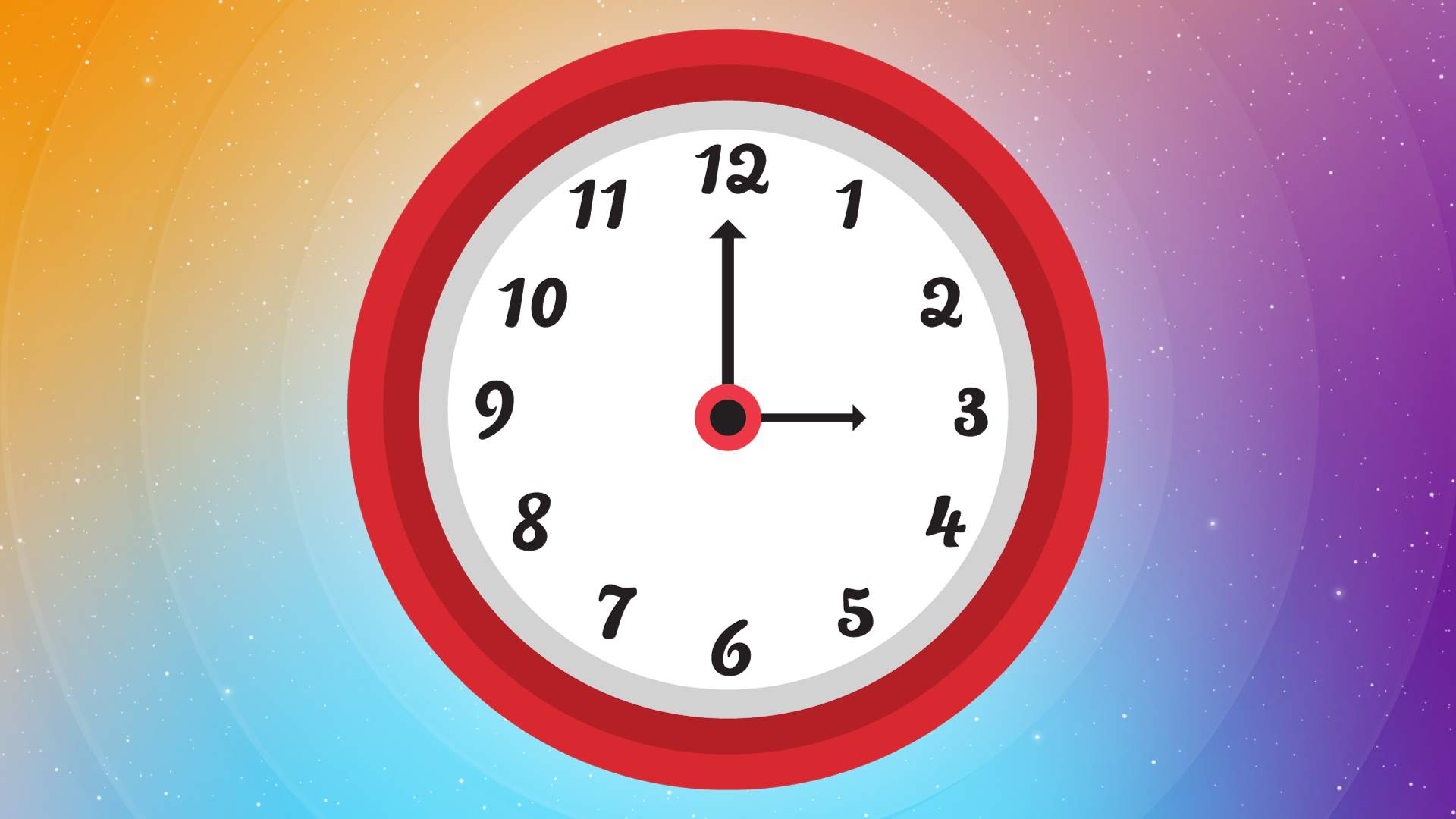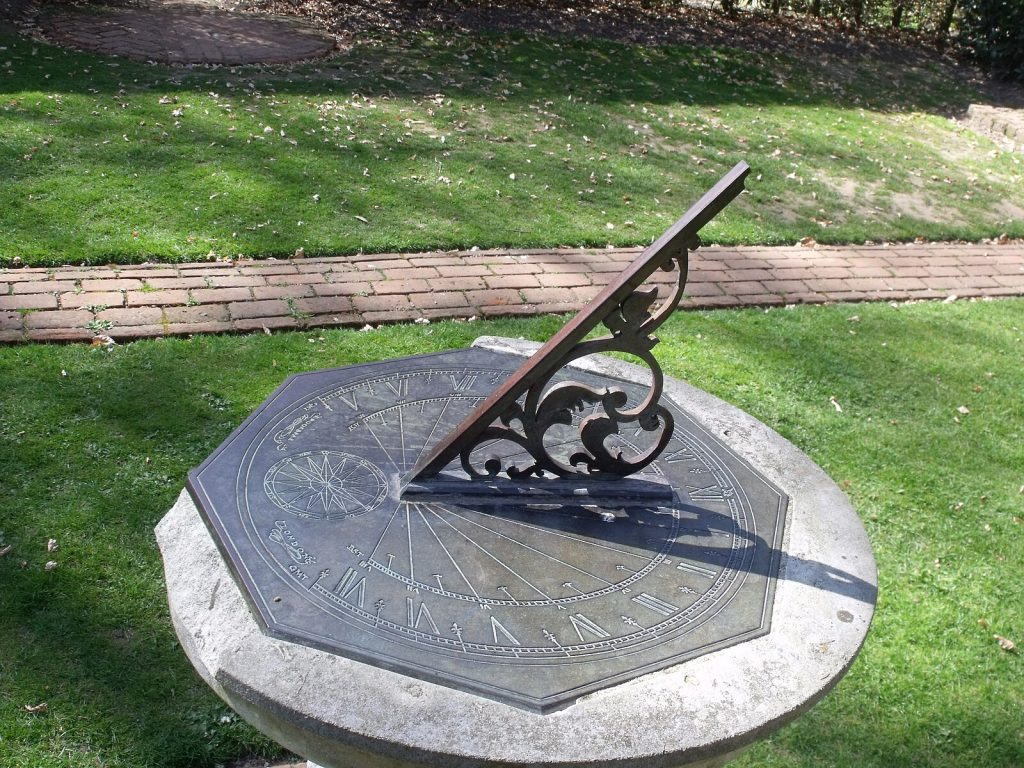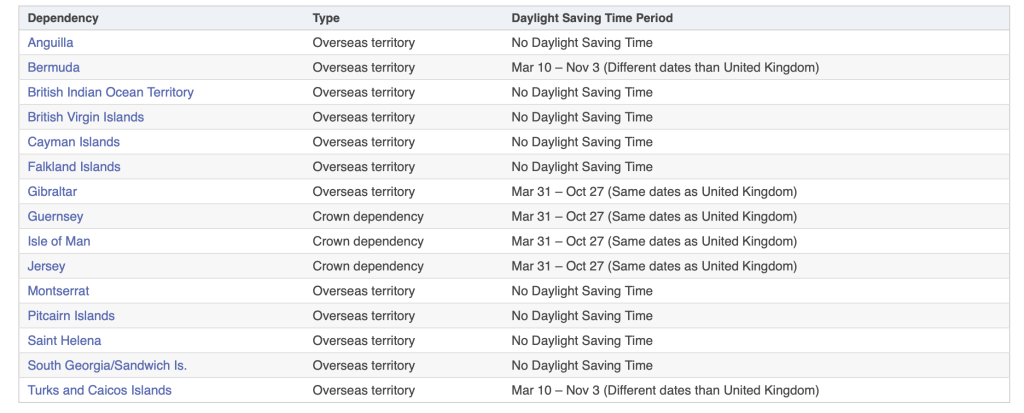Daylight Savings: When Do The Clocks Go Forward In The UK & Other Countries? Why Do We Do That?
27th Oct 2023
Spring is here, which means we’re close to the clock change in the UK. Traditionally, the United Kingdom, as well as many other countries across the globe, switch out of daylight savings. So, when does British summertime start and end, and why do we still need to change the clocks?
Do the Clocks Go Forward or Back in March 2024?
On the last Sunday of March in the UK, this year falling on March 31st, clocks are set forward by one hour, marking the beginning of British Summer Time (BST). While it might seem like an eternity since the sunny days of summer, this time change not only signifies the onset of spring but also means that evenings will be lighter. Additionally, this adjustment results in one less hour of sleep on the day of the time change.
Most electronic devices automatically adjust to the new time; however, individuals may still need to manually update the clocks on certain appliances
Why Do We Change the Clocks in March?
The practice of changing the clocks to Daylight Saving Time (DST), or summertime, is primarily aimed at making better use of daylight during the longer days of summer. The idea behind DST is to shift an hour of daylight from the morning to the evening, allowing people to have more daylight in the evenings when they are typically more active. This adjustment is believed to help conserve energy and reduce the need for artificial lighting in the evenings.
Who Suggested & Implemented DST Idea First?
Benjamin Franklin is commonly acknowledged for proposing the concept of daylight saving time in his 1784 essay, “An Economical Project.” Although his idea did not gain serious traction at the time, it laid the groundwork for future considerations. It wasn’t until more than a century later that William Willetts, a British builder, fervently championed the notion of daylight saving time. Ultimately, his efforts led to the adoption of daylight saving time in various parts of the world.

DST was first widely adopted during World War I and II to conserve fuel and energy resources during the war efforts. While it was discontinued after the wars, many countries reintroduced DST during the energy crisis of the 1970s to save energy.
By extending evening daylight hours during the longer days of summer, it’s thought that people will use artificial lighting less frequently in the evening, leading to energy savings. Longer daylight hours in the evening allow for more outdoor activities and recreation after working hours, promoting physical activity and social interaction.
Is the UK Getting Rid of Daylight Savings Time (DST)?
While the discussions about abandoning daylight saving time have been going on for years, the UK doesn’t plan to get rid of it anytime soon. In 2019, the European Parliament voted to abolish Daylight Savings Time entirely. Originally slated to commence in 2021, the implementation of this change has been halted. EU member states were tasked with choosing between remaining in winter or summer time once the transition occurred, but they were unable to reach a consensus on this matter.
Following the 2019 decision by the European Parliament to abolish clock changes, a YouGov poll revealed that a slim majority of Britons favoured retaining Daylight Saving Time (DST). According to the poll, 44 per cent of respondents wanted to maintain the existing system, while 39 per cent voted to eliminate the clock changes.
Interestingly, most survey participants supported the idea of staying on British Summer Time throughout the year if DST were to be abandoned. This would result in longer daylight hours during summer evenings but shorter daylight periods in winter mornings.
In a development from last year, experts suggested that households could potentially save over £400 a year on energy bills if the clocks were not adjusted back at the end of October.
In 2010, a parliamentary report looking at the prospect of permanently shifting an hour ahead concluded that “although we might expect overall energy use to be reduced by extending British summertime, the effects are likely to be small in magnitude … [and] the evidence quantifying these effects is not strong enough to conclude either way what the impact on the overall [energy] demand would be”.
What Would Happen If We Get Rid of Daylight Savings Time?

Eliminating daylight saving time would have several potential effects, both positive and negative.
The original purpose of daylight saving time was to conserve energy by using natural daylight better during longer evenings. However, the energy-saving impact of daylight saving time is debated in modern times. Some argue that the energy savings are negligible or non-existent due to changes in energy consumption patterns and technological advancements.
Some businesses, especially those in retail and outdoor recreation, have benefited from the extended evening daylight hours during certain parts of the year. Abolishing daylight saving time might impact these sectors, although the overall economic impact would depend on various factors and could vary by region.
On the other hand, changing time leads to confusion, sleep deprivation, and some of the health issues. Studies have shown that biannual time changes can disrupt sleep patterns and circadian rhythms, potentially leading to health issues such as increased risk of heart attacks and strokes. People’s overall health and well-being might improve by eliminating these time shifts.
How Do ISS Astronauts Know About Daylight Saving Time?
The International Space Station (ISS) employs Coordinated Universal Time (UTC) as its standard timekeeping system. UTC, often known as Greenwich Mean Time (GMT), is derived from the mean solar time at the Prime Meridian in Greenwich, London, England.
Unlike many time systems, UTC does not adhere to daylight saving time, ensuring its consistency throughout the year.
How Many Countries Have Daylight Savings Time?
Around the globe, approximately 70 countries adhere to daylight saving time (DST). It’s essential to recognize that the number of countries and regions observing DST, as well as the specific start and end dates, can change due to legislative or governmental decisions. Currently, fewer than 40 per cent of countries globally utilize DST switches, despite the fact that over 140 countries had previously adopted this practice at some point in the past.
The UK, all European Union nations, and many European non-member states still transition twice a year. Outside of Europe and the United States/Canada, countries including Paraguay, Chile, Cuba, Haiti, the Levant, New Zealand, and certain Australian regions also adjust their clocks for daylight saving time. Additionally, Egypt plans to reintroduce DST on April 28 as an energy conservation measure.
Notably, Japan, India, and China are the only major industrialised nations that do not observe any form of daylight saving time.
When Will the USA’s Clocks Spring Forward in 2024?
The choice to observe Daylight Saving Time (DST) and the corresponding start and end dates are typically determined independently by each country or region. In the United States, for instance, DST traditionally commences on the second Sunday in March and concludes on the first Sunday in November.
United States clocks change in 2024
- Clocks go forward on 10 March 2024
- Clocks go back on 3 November 2024
Although, it’s worth noting that most of Arizona doesn’t change its clocks. With the exception of the Navajo Nation, Arizona residents are exempt from the clock-changing dilemma. The unique stance of the Grand Canyon State toward DST is rooted in a practical consideration: the sweltering heat that defines its summer days. With temperatures frequently soaring above 100 degrees Fahrenheit, residents find solace in shorter days, steering clear of the desire for extended daylight hours. In contrast to regions where DST is embraced for longer evenings, Arizona’s decision reflects a climate-driven preference, as its inhabitants prioritize cooler, more comfortable evenings over the prospect of prolonged daylight.
The same applies to Hawaii. This state opted out of the 1966 law that standardised summertime in the country. Hawaiians really don’t need it. The state is located much further south than those in the mainland United States, so daylight saving time provides little to no benefits. Daylight hours don’t vary much, averaging about 12 a day, regardless of the season.
Daylight Saving Time in Dependencies of the UK

How Does Daylight Savings Affect Astronomy?
Daylight Saving Time (DST) can have an impact on astronomy and stargazing activities, primarily because it affects the timing of sunset and sunrise. When DST begins and clocks are set forward by one hour in the spring, evenings become darker later, allowing for fewer opportunities to observe celestial objects after regular working hours. This shift in time can be particularly affect young amateur astronomers and stargazers, as they have less time of darkness (if any) to enjoy their hobby before going to bed.
Conversely, when DST ends and clocks are set back by one hour in the fall, evenings become darker earlier. While this may extend the time available for stargazing after work or school, it does mean that mornings are lighter, thus limiting opportunities for early morning observations of celestial events such as meteor showers, lunar eclipses, and planetary conjunctions.
However, the impact of DST on astronomy is somewhat controversial. Some astronomers and stargazers appreciate the longer evening hours during DST, as it allows for more public outreach events and educational programs before sunset. Others argue that the disruption caused by changing the clocks twice a year can be confusing and may negatively impact astronomical observations.
![Beauty of the Pink Moon And Lyrid Meteor Shower in This Week’s Best Astrophotos [19-26 April] Beauty of the Pink Moon And Lyrid Meteor Shower in This Week’s Best Astrophotos [19-26 April]](https://orbitaltoday.com/wp-content/uploads/2024/04/Pink-Moon-is-on-its-way-above-the-mountains-1-300x300.jpg)





Thank you for your comment! It will be visible on the site after moderation.